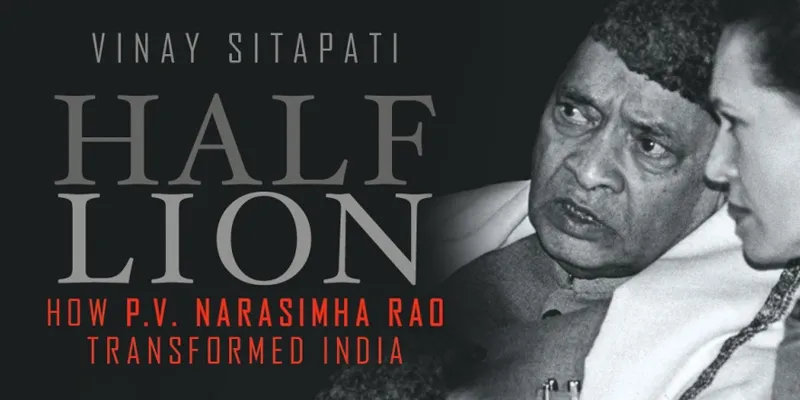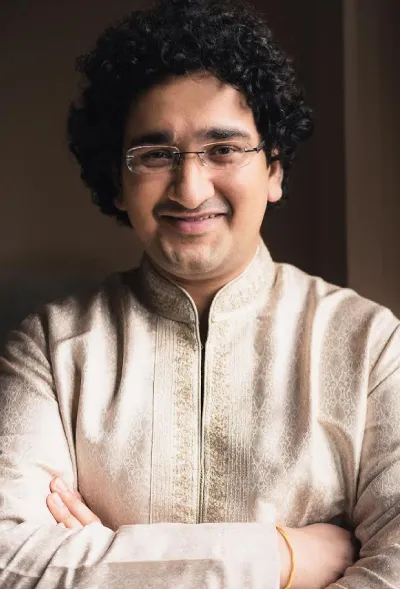How a forgotten ex-PM paved the way for entrepreneurship in India
In 1991, when Pamulaparti Venkata Narasimha Rao became Prime Minister, he inherited economic crisis, violent insurgencies, and the sense of national adrift that followed former Prime Minister Rajiv Gandhi’s assassination. Additionally, he had to tackle a balance-of-payments crisis that the outgoing Chandrashekar government had sought to resolve by pledging gold with the International Monetary Fund. Rao was aware that he had to liberalise the economy.

Many Indians in this age of ideas and startups would have been toddlers when Rao liberalised the economy and opened up avenues for private entrepreneurship, which was till then in the grip of the Licence Raj system.
He brought ordinary Indians the taste of economic freedom and their dreams could soar with free-spirited ideas. He unshackled their bondage to the system and limited government intervention or interference if you will. He also gave educated Indians a chance to pursue private employment and changed their lives for the better – an era where talent could command earnings, and ideas could be seeded in business.
This is the privilege that Indians of this era are reaping – with startups and techies mushrooming from Bengaluru to NCR, from Hyderabad to Chennai, and from Pune to Kochi.
Vinay Sitapati’s Half Lion: How PV Narasimha Rao Transformed India unravels the story of the political genius.
Sitapati, a political scientist, journalist, and lawyer, got access to Rao’s personal diary, and he intersperses accounts of events with focused interviews of the then players. The biography, published late last year, seeks to give the former Prime Minister his rightful place as the principal architect of economic reforms that resonates even 25 years later.
'Did not know it was so bad'
“I didn’t know it was this bad…,” was Rao’s reaction to the briefing on the balance-of-payments crisis, the unprecedented devaluation of the rupee and the mortgaging of gold while being updated by the Cabinet Secretary a day before he was to be sworn in as India’s 10th Prime Minister.
“The economy was so wrecked that India was pawning its family jewellery. There have been crises in 1965-67, 1973-75 and 1979-81. None, however, was more alarming than what India faced in 1991. To mend the situation, India needed ‘fiscal discipline, [to] dismantle trade barriers, and remove licenses, permits and anti-monopoly laws that bound domestic entrepreneurs,” the author notes.
Rolling out the process
On July 24, 1991, Rao, who also held the industry portfolio, tabled a statement in the Lok Sabha abolishing industrial licensing. It was followed by his finance minister Manmohan Singh presenting his historic Budget, ushering in an unprecedented course correction in the country’s long-accepted economic doctrine.
Sitapati states that in the media's enthusiasm to etch a larger-than-life narrative for Singh as the numero uno reformer, Rao’s role in the narrative was swept under the carpet.
In a little over a month, the government started the reform process, setting in motion a revolution in India’s economic policy, borne out of a financial crisis that had been years in the making.
Lesson for startups
But Rao did not abandon liberalisation midway despite everyone having some complaint or the other. He was clear that liberalisation meant freedom, not licence. When the stock market collapsed in 1992 with the Harshad Mehta scams, everyone said it was due to the reforms. The Prime Minister had him arrested. There was reform in the way the markets functioned too.
Infosys founder Nandan Nilekani credits Rao with the most important reform – that of free pricing shares from which software companies benefited immensely. It also changed the way foreign companies looked at India.
Calmed and converted
The liberalisation opened up sectors as diverse as airlines, soft drinks, and television. By 1994, the opponents of the liberalisation had calmed, if not converted. By now, macro indicators showed a soaring India. A consumer boom had set in. GDP growth then was 6.7 percent and would be 7.6 and 7.5 percent in Rao’s last two years in office.
That Rao was still able to “cause”, as the author insists there is no better word, the most sweeping economic reform in Indian history is the proof of his political genius.
Honest work pays
Though software companies employed just a fraction of the working population, they came to symbolise a new India where honesty and hard work could make millionaires out of the middle class. Rao liked software companies and linked them to his reforms. He was one of the first to use computers back then and dabbled in a bit of coding himself.
The dhoti-wearing Prime Minister would lead from the front when it came to drawing foreign investment. He visited Davos twice and was the first Indian head of state to do so. He also knew that such exposure would be an advocacy for his reforms.
Rao also encouraged NRIs to come back and invest. To include the local industry, he worked hard and Confederation of Engineering Industry changed its name to Confederation of Indian Industry in 1992 in line with the reforms in progress.
Stark beginning
The book begins by recalling the somber images of the half-burnt body of the former Prime Minister. Photographs of Rao’s mortal remains left alone in a Hyderabad crematorium after a state funeral were splashed in the media. Someone had forgotten to feed the firewood to cremate the body fully. It symbolised his loneliness even in death.

Rao was one of the few Prime Ministers who was also a former Chief Minister - of Andhra Pradesh, his home State. He retired as Foreign Minister of India, and the Indian National Congress had put him out to pasture till Rajiv Gandhi’s assassination put him in the spotlight. “Am I speaking to the next Prime Minister,” NDTV founder Prannoy Roy had famously asked Rao on the eve of the Congress winning the hustings. That was, perhaps, the only time Rao ever smiled on camera, but the man remained evasive as always.
A polyglot takes over
A polyglot well-versed in many Indian and foreign languages, Rao, from Telangana, soon rose in the Congress party and became one of its top leaders.
UP still pays the price
While politically he may have been isolated, it is pertinent to remember that he was the first person in the Congress not from the Nehru-Gandhi family to complete a full term in office (later Manmohan Singh completed two terms). But the party still blames him for the decimation in the Hindi heartland following the demolition of the disputed Babri Masjid structure at the height of the Ram Mandir movement by the BJP and the right wing.
A stoic statesman
While the party officially credits the 1991 reforms to Singh, there is no doubt that Rao himself was behind the move to open up the economy. The author compares Rao, perceived as a stoic and tight-lipped leader, to a bunch of iron-fisted rulers from across the globe—Jawaharlal Nehru, India’s first Prime Minister, US Presidents Franklin Roosevelt, Ronald Reagan, Chinese revolutionary Deng Xiaoping, UK's Iron Lady Margaret Thatcher and French statesman Charles De Gaulle.
Sitapati gives a glimpse of the behind-the-scenes power struggle with interesting anecdotes on how Rao neutralised those who criticised his radical reforms. His record as a reformer who transformed both the economy and foreign policy has made him a political genius.
An astute statesman, Rao reportedly spoke to Subramanian Swamy, the Commerce and Industry minister in the outgoing government, on his plan to manage the balance-of-payments crisis.
Picking the right team
Rao emerged as a man who provided transformational leadership to India at a time of deep financial crisis.
By the time he understood the gravity of the situation, the former protectionist morphed into a more pragmatic leader, picking experts regardless of their political affiliation.
While deciding on his new Cabinet, Rao wanted an apolitical economist with an internationally credible face capable of dealing with the West. He had two choices: I.G. Patel, former Director, London School of Economics and Manmohan Singh, economist and former Reserve Bank of India Governor. Patel declined, so Singh was sworn in as Finance Minister.
Rao also picked Jairam Ramesh, a liberalising policy wonk then, as the officer on special duty, and an arrogant but unashamed liberaliser in P Chidambaram as his Commerce Minister.
Earlier governments led by Indira Gandhi, Rajiv Gandhi and V.P. Singh too were aware of the significance of liberalising the economy. Rajiv Gandhi had even attempted such reforms in 1985 but the author notes that Gandhi “lacked the skills to manage the politics of reform.” Rao too had a problem – his was a minority government and he had his own partymen tripping him.
A shrewd strategist
By pulling off reforms his predecessors had failed to implement, Rao proved to be a shrewd strategist. Sitapati writes, “Though Manmohan was critical to Rao’s team, he was not indispensable. Had I.G. Patel become finance minister in 1991, liberalisation would have likely persisted. But, had Narasimha Rao not become prime minister, India would have been a different country.”
This understanding is further bolstered by many other events. Singh’s budget overhauled import-export policy, slashed import licensing and reduced tariffs. He also announced increased foreign funding. In a single day, they both dismantled three pillars of Licence Raj – public sector monopoly, limits on private business and isolation from world markets. And paved the way for entrepreneurship in India.
Half Lion: How P.V. Narasimha Rao Transformed India by Vinay Sitapati. Imprint – Penguin Viking, Category- Biography; Price Rs 699.







